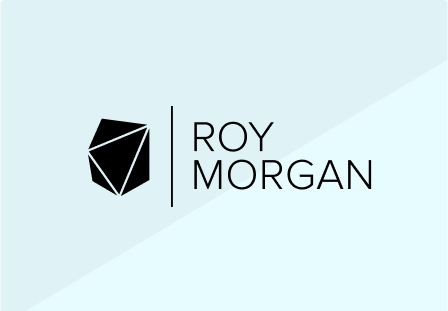NSW Voting Intention: ALP lead over the L-NP cut in early in 2023: ALP 52% cf. L-NP 48%

The latest Roy Morgan Poll on State voting intention in New South Wales shows the ALP on 52% (down 3% points since December) ahead of the Liberal-National Coalition on 48% (up 3% points) on a two-party preferred basis.
This Roy Morgan Poll on State voting intention was conducted via telephone and online surveying with 1,147 New South Wales electors aged 18+ during the month of January 2023.
Primary voting intention shows the Coalition on 35% leads the ALP on 32.5%
The Liberal-National Coalition gained ground on the ALP in January with primary support increasing 1.5% points to 35%. Support for the ALP was down 1% point to 32.5%.
Not since the 2007 New South Wales Election have both major parties failed to secure a primary vote support of at least 40% in a New South Wales State Election.
The support for minor parties and independents remained at a high level in January, down slightly by 0.5% points 32.5%. Support for the Greens was down 2.5% points to 9.5% while support for One Nation increased 2% points to 6.5%. This is the highest level of support for One Nation in New South Wales since the party attracted support of 7.5% in the 1999 New South Wales State Election.
Among the other minor parties support for the Shooters, Fishers and Farmers Party is on 1.5% (up 0.5% points), the Animal Justice Party is on 1.5% (up 0.5% points), the Legalise Cannabis Party is on 1% (unchanged), the Liberal Democrats are on 0.5% (unchanged), ‘Teal Independents’ are on 0.5% (down 0.5% points) and 11.5% (down 0.5% points) say they will support other minor parties and independents.
Roy Morgan CEO Michele Levine says the latest Roy Morgan Poll into NSW voting intention shows the election is still ‘up for grabs’ just over a month before election day in late March with the ALP holding a narrow two-party preferred lead over the Liberal-National Coalition:
“The latest Roy Morgan Poll of NSW voting intention shows the ALP on 52% narrowly ahead of the Liberal-National Coalition on 48% on a two-party preferred basis. This result is a reverse of the 2019 New South Wales election when the L-NP won a majority of 48 seats in the 93 seat lower house.
“The primary voting intention shows an almost three way split between the Coalition on 35% ahead of the ALP on 32.5% and another 32.5% supporting other parties and independents. This result is very similar to last year’s Federal Election when the ALP won Government despite receiving only 32.6% of the primary vote, even less than the L-NP on 35.7%.
“The low primary vote for the major parties increases the importance of preferences from minor parties and independents. Around half of the support for this group is flowing to two minor parties on either side of politics – the left-wing Greens on 9.5% and right-wing One Nation on 6.5%.
“Greens support traditionally flows strongly to the ALP via preferences at a rate of around 85% while One Nation support flows via preferences at a rate of around 65% to the Coalition. However, the optional preferential voting (OPV) used in NSW means voters need not direct their preferences to any party beyond their first choice.
“The OPV system allows voters to simply number their ballot paper with a ‘1’ for their preferred candidate to register a valid vote. Analysis of prior NSW State elections shows around 50% of voters direct preferences to exhaustion while the other 50% of voters don’t.
“The OPV system therefore makes it harder for parties finishing second, or even third, in the primary vote to overtake the leading party on preferences – favouring the party with the highest primary vote. Not since the 1995 NSW State election has a party won government despite receiving a lower primary vote.
“One interesting result from this month’s voting intention results in NSW is that support for One Nation increased 2% points to 6.5% - the highest level of support for the party since the 1999 NSW State Election over 20 years ago when the party scored 7.5% of the vote.
“One reason for the rise in support for One Nation may have been the recruitment of former Labour MP Tania Mihailuk during January. Mihailuk has represented the seat of Bankstown in the western suburbs since 2011 before resigning from the ALP in 2022 and joining One Nation in mid-January.
“Upon joining One Nation Mihailuk became the first One Nation MP to represent a lower house seat in the NSW Parliament and will run for the Legislative Council in second place behind NSW One Nation Leader Mark Latham – a former Federal ALP Leader.”
See PDF for Tables of results.
For further comment or more information contact:
Michele Levine 0411 129 093 or Gary Morgan 0411 129 094 or Julian McCrann (03) 9224 5365 or email askroymorgan@roymorgan.com.
Margin of Error
The margin of error to be allowed for in any estimate depends mainly on the number of interviews on which it is based. Margin of error gives indications of the likely range within which estimates would be 95% likely to fall, expressed as the number of percentage points above or below the actual estimate. Allowance for design effects (such as stratification and weighting) should be made as appropriate.
| Sample Size | Percentage Estimate |
| 40% – 60% | 25% or 75% | 10% or 90% | 5% or 95% | |
| 1,000 | ±3.0 | ±2.7 | ±1.9 | ±1.3 |
| 5,000 | ±1.4 | ±1.2 | ±0.8 | ±0.6 |
| 7,500 | ±1.1 | ±1.0 | ±0.7 | ±0.5 |
| 10,000 | ±1.0 | ±0.9 | ±0.6 | ±0.4 |
| 20,000 | ±0.7 | ±0.6 | ±0.4 | ±0.3 |
| 50,000 | ±0.4 | ±0.4 | ±0.3 | ±0.2 |




